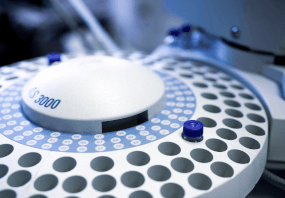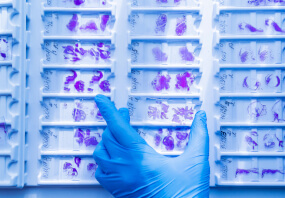Application
Acriflavine is used to fluorescently label high molecular weight RNA molecules .
Excitation and emission wavelengths in various solvents :
- Methanol: λex = 424 nm; λem = 518 nm
- Ethanol: λex = 426 nm; λem = 524 nm
- Propanol: λex = 430 nm; λem = 512 nm
- Butanol: λex = 430 nm; λem = 526 nm
- Formamide: λex = 434 nm; λem = 524 nm
- Glycerol: λex = 432 nm; λem = 540 nm
- Water: λex = 416 nm; λem = 514 nm
Insoluble in ether, chloroform, and fixed oils. Utilized in fluorescence steady state measurements as a donor molecule (when paired with rhodamine 6G as the acceptor) to function as a pH sensor .
- Acriflavine has been used in the agglutination test to distinguish between smooth and rough colony formation of Brucella melitensis.
- It has been used as an Ago2 (argonaute 2) inhibitor.
- It has been used as an inhibitor of HIF-ARNT (hypoxia-inducible factor - aryl hydrocarbon receptor nuclear translocator) complex formation.
- It has been used to study the bacteriocin production by Carnobacterium piscicola.
Biochem/physiol Actions
Acriflavine also interacts with HIF-1α (hypoxia-inducible factor 1 α) and HIF-2α, and thereby suppresses dimer formation of HIF-1 and transcriptional function. It also has negative effect on tumor growth and vascularization. Acriflavine also exhibits trypanocidal, antibacterial and antiviral activities.
- UPC:
- 41116107
- Condition:
- New
- Availability:
- 3-5 Days
- Weight:
- 1.00 Ounces
- HazmatClass:
- No
- MPN:
- A8126-100G
- CAS:
- 8048-52-0












